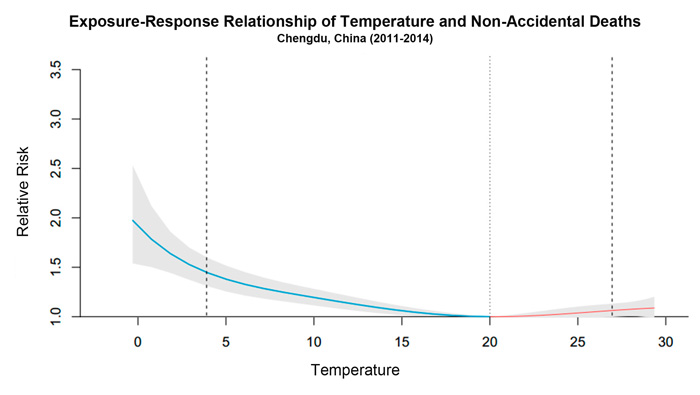Discussion postings
Read the article reviews from the two students below and post a reflection on each students’ article reviews. Make certain that your response is written in complete sentences and makes reference to what the article is about and how statistics are used in the article. Each of your responses should be a minimum of 150 words in length.
Student #1
Katherine
The study I found examines the relationship between temperature and human mortality. A nine-member research team set out to examine which end of the temperature spectrum (hot or cold weather) exerts a greater deleterious effect on human health in Chengdu, China (co2science.org, 2017). The researchers chose Chengdu due to the large populations of 14.65 million people. By collecting the daily temperature and death record data from January 1, 2011 through December 31, 2014 and estimating the relationship between daily mortality and temperature using a distribution lag model, the researchers discovered that the effect of cold temperatures was ten times larger than warm temperatures co2science.org, 2017).
I found this article interesting because it’s winter and there are frigid temperatures in many areas across the United States. Sometimes I feel like I’m so cold I might die. But I also survived the summer of 2011 in Fort Worth, TX, when I felt so hot that I thought I was going to die. I was pretty surprised to see that death due to cold weather was more prevalent because it seems like there are more ways to warm up than there are to cool off.

Student #2Jessica Eller
Jessica
This study compared musculoskeletal pain and co-morbidity in adults and the impact these effects had on social involvement. The study consisted of 1,811 (n=1,811) adults ages 18 and older who, based on answers to a questionnaire, complained of pain and associated insomnia which negatively affected his or her social interaction (Baker, 2017). Patients responded to three different categories of insomnia and his or her baseline results were compared to a 12-month follow up.
The study concluded that pain and insomnia often occur simultaneously which leading to diminished functional ability. The study suggests that due to the correlation between pain and insomnia it is essential for physicians to assess such complaints allowing the physician to offer necessary interventions. Since there were different categories defining insomnia there were respective confidence intervals (CI) for each category. Relating to delayed sleep onset the 95% CI ranged from 1.5-3.5; difficulties maintaining sleep ranged from 4.0-9.1; early wakening from 2.3-4.4; and non-restorative sleep from 2.9-5.9 (Baker, 2017). There was a considerable correlation between delayed sleep onset and the effects on social involvement at the 12-month follow up. The final CI ranged from 0.1-.99 with a population proportion of .049 (Baker, 2017).
This hyperlink directs you to the article and includes all related charts and graphs.


Leave a Reply
Want to join the discussion?Feel free to contribute!